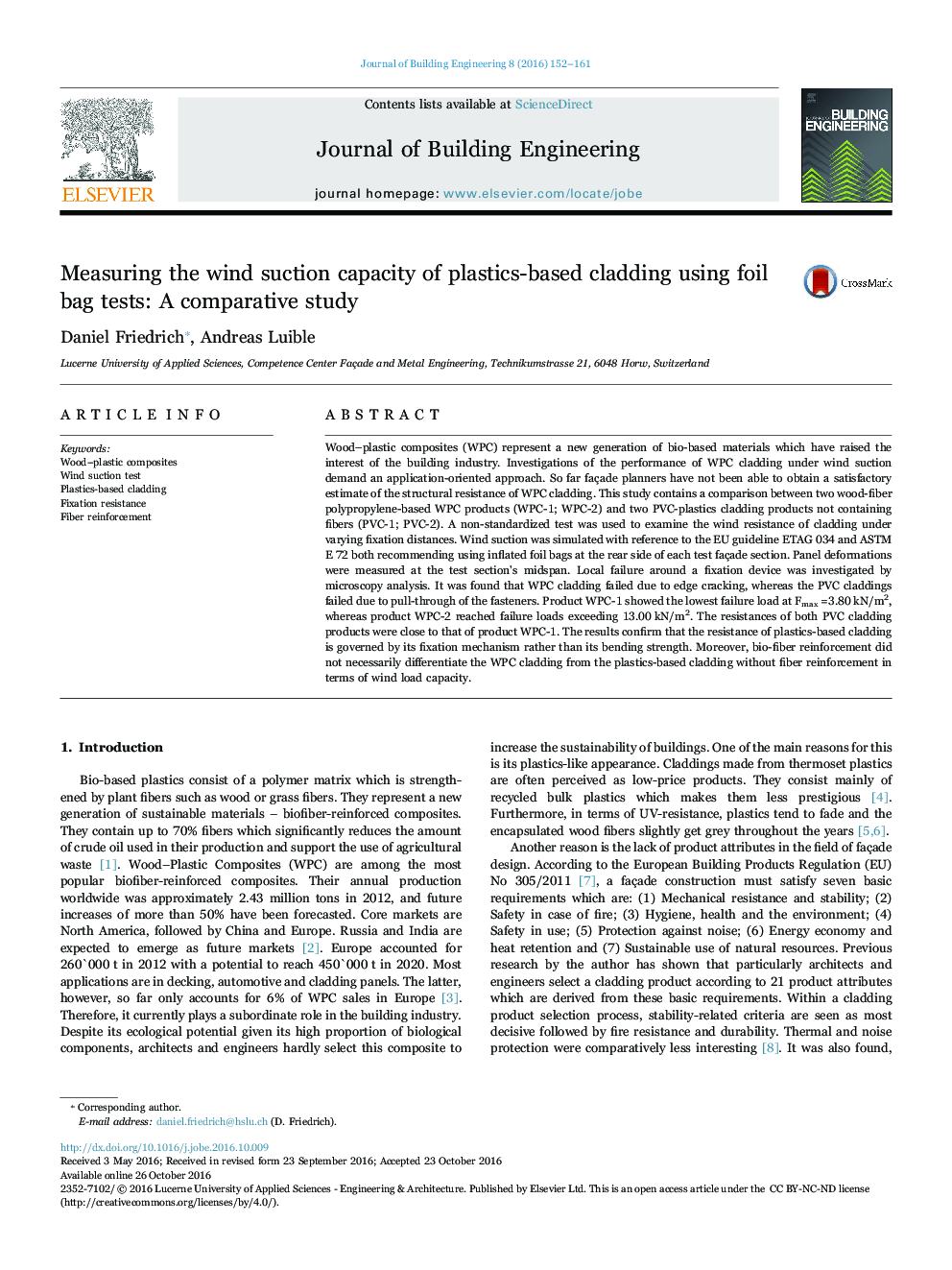| Article ID | Journal | Published Year | Pages | File Type |
|---|---|---|---|---|
| 4923216 | Journal of Building Engineering | 2016 | 10 Pages |
â¢Wood-Plastic Composite (WPC) claddings were tested against wind suction.â¢Wind suction was simulated by inflated foil bags.â¢Mounting of panels was feasible by screws in slotted holes.â¢Tested specimens failed due to low fixation resistance.â¢Fiber-reinforcement and wall-thickness increases wind resistance of WPCs.â¢The product development of WPC cladding should focus on fixation mechanism.
Wood-plastic composites (WPC) represent a new generation of bio-based materials which have raised the interest of the building industry. Investigations of the performance of WPC cladding under wind suction demand an application-oriented approach. So far façade planners have not been able to obtain a satisfactory estimate of the structural resistance of WPC cladding. This study contains a comparison between two wood-fiber polypropylene-based WPC products (WPC-1; WPC-2) and two PVC-plastics cladding products not containing fibers (PVC-1; PVC-2). A non-standardized test was used to examine the wind resistance of cladding under varying fixation distances. Wind suction was simulated with reference to the EU guideline ETAG 034 and ASTM E 72 both recommending using inflated foil bags at the rear side of each test façade section. Panel deformations were measured at the test section's midspan. Local failure around a fixation device was investigated by microscopy analysis. It was found that WPC cladding failed due to edge cracking, whereas the PVC claddings failed due to pull-through of the fasteners. Product WPC-1 showed the lowest failure load at Fmax =3.80Â kN/m2, whereas product WPC-2 reached failure loads exceeding 13.00Â kN/m2. The resistances of both PVC cladding products were close to that of product WPC-1. The results confirm that the resistance of plastics-based cladding is governed by its fixation mechanism rather than its bending strength. Moreover, bio-fiber reinforcement did not necessarily differentiate the WPC cladding from the plastics-based cladding without fiber reinforcement in terms of wind load capacity.
